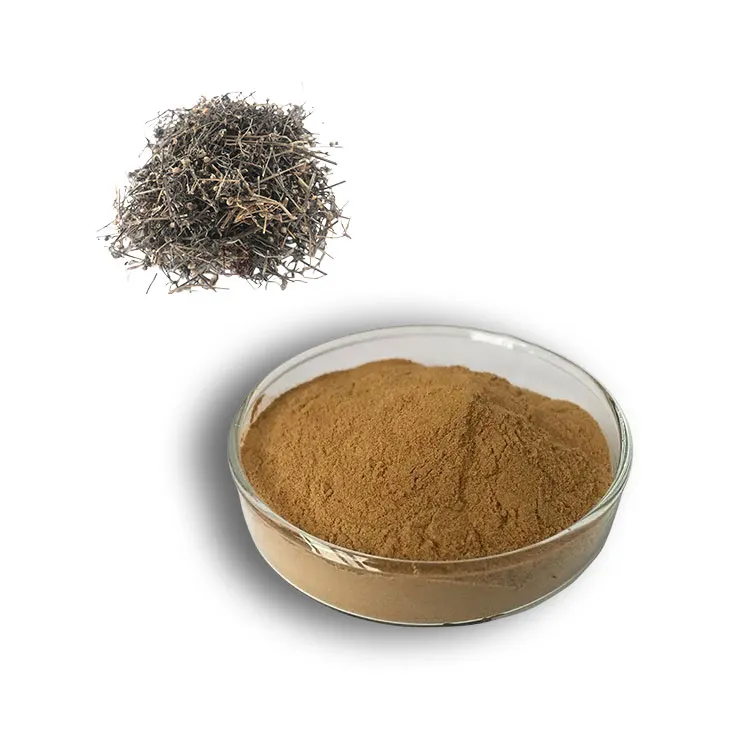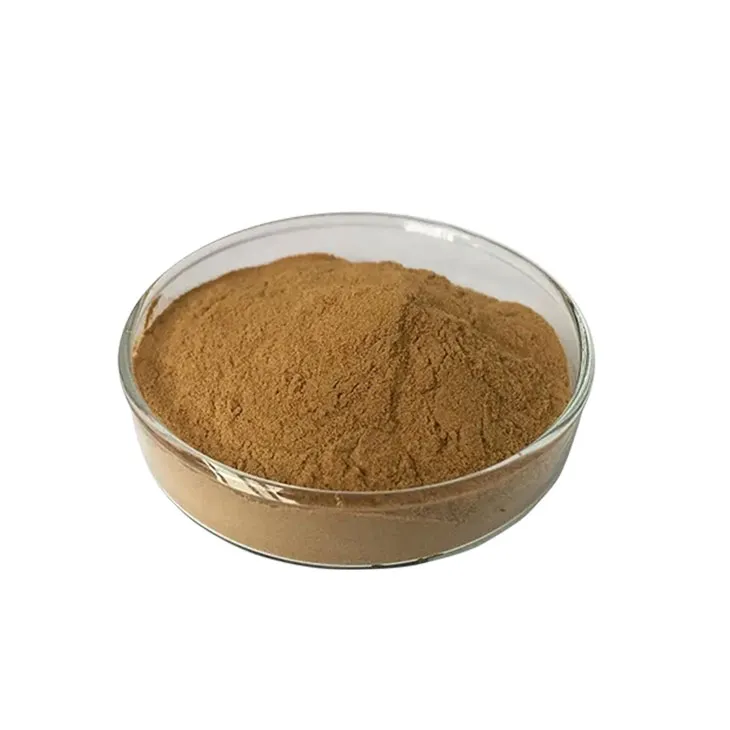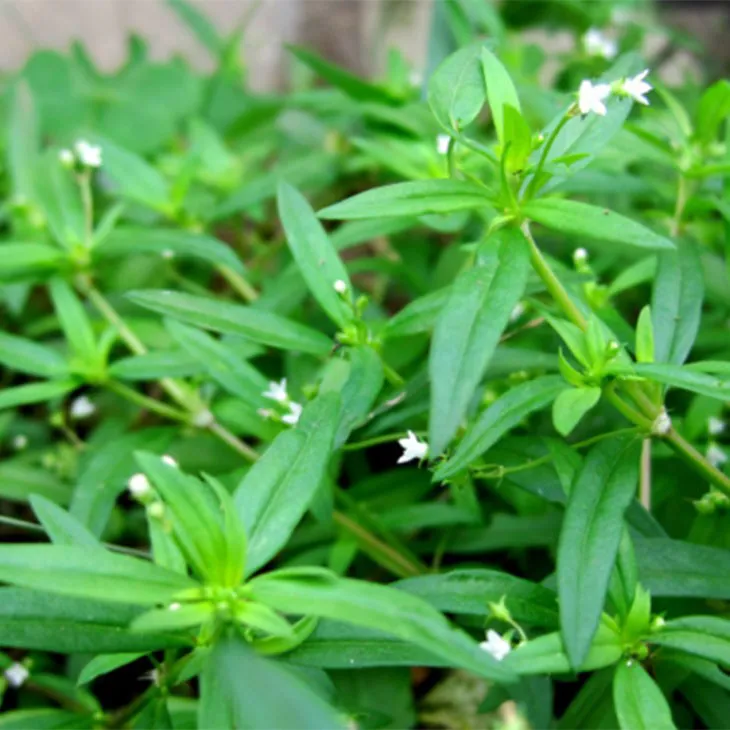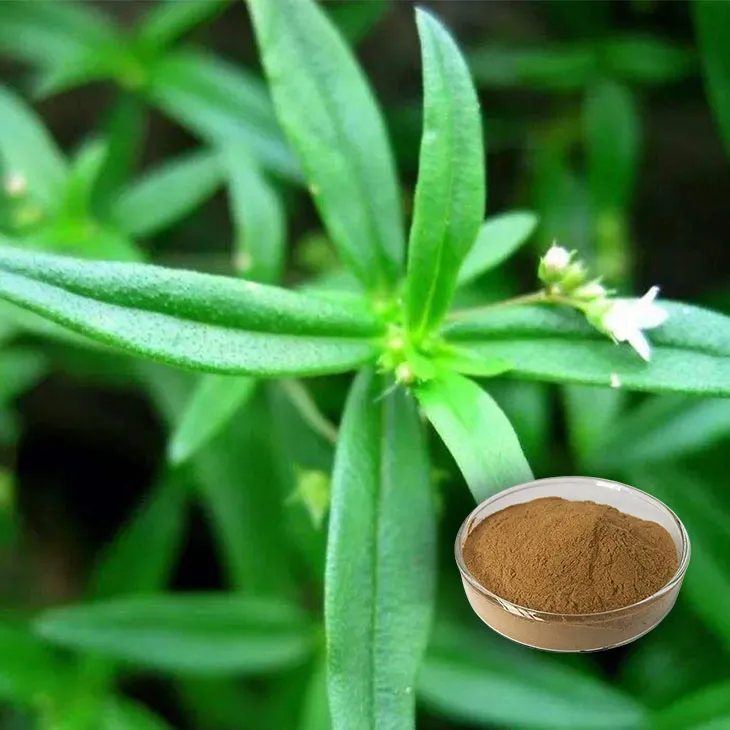- 0086-571-85302990
- sales@greenskybio.com
What is Hedyotis diffusa extract and why is it used on the skin?
2024-11-13

1. Introduction to Hedyotis Diffusa Extract
Hedyotis Diffusa Extract is a substance obtained from the Hedyotis diffusa plant. This plant has a long history in traditional medicine. The extract contains a rich variety of chemical components, which are the key factors contributing to its beneficial effects on the skin.

2. Chemical Constituents in Hedyotis Diffusa Extract
2.1 Flavonoids
Flavonoids are one of the important chemical constituents in Hedyotis diffusa extract. They possess antioxidant properties. Antioxidants play a crucial role in skin health as they can combat free radicals. Free radicals are unstable molecules that are generated in the body due to various factors such as environmental pollution, ultraviolet (UV) radiation from the sun, and smoking. These free radicals can damage skin cells, leading to premature aging, wrinkles, and dull skin. Flavonoids in the extract can neutralize these free radicals, thus protecting the skin cells from damage.
2.2 AlkaloidsAlkaloids present in the Hedyotis diffusa extract also contribute to its skin - related benefits. They may have anti - inflammatory properties. Inflammation on the skin can occur due to various reasons like acne, eczema, or skin allergies. The anti - inflammatory action of alkaloids can help reduce redness, swelling, and discomfort associated with skin inflammation.
2.3 TriterpenesTriterpenes are another group of components in the extract. They are known to have a positive impact on the skin's barrier function. The skin barrier is crucial for maintaining skin hydration and protecting the skin from external harmful substances. Triterpenes can enhance the integrity of the skin barrier, preventing moisture loss and keeping the skin hydrated.

3. Benefits of Hedyotis diffusa Extract on Skin
3.1 Enhancing Skin's Self - Repair Ability
- When the skin is exposed to harmful environmental factors such as UV radiation, it can get damaged. Sunburn is a common form of skin damage. The active ingredients in Hedyotis diffusa extract can stimulate the skin cells' natural repair mechanisms. For example, they can promote the production of collagen. Collagen is an essential protein in the skin that provides structure and elasticity. By increasing collagen production, the skin can heal more quickly from damage and maintain its firmness.
- Minor scratches on the skin can also be healed faster with the help of this extract. The components in the extract can signal the skin cells to start the regeneration process sooner. This is especially beneficial for people who are prone to getting small cuts or abrasions on their skin.
- The extract has the ability to inhibit the production of melanin in the skin. Melanin is the pigment responsible for skin color. Excessive melanin production can lead to dark spots, uneven skin tone, and hyperpigmentation. By reducing melanin production, Hedyotis diffusa extract can make the skin look brighter and more even - toned. This is a desirable effect for those who are concerned about skin discoloration issues.
- It works in a way that is relatively gentle compared to some harsh chemical whitening agents. It does not cause significant irritation to the skin while achieving the whitening effect, making it suitable for a wide range of skin types.
- Hedyotis diffusa extract is suitable for different skin types, including sensitive skin. Sensitive skin is more prone to irritation from various skincare products. However, the natural components in this extract are well - tolerated by sensitive skin. It does not disrupt the skin's natural balance and can provide beneficial effects without causing excessive redness, itching, or other forms of irritation.
- Even for normal and oily skin types, it can be a great addition to skincare routines. It can help maintain the skin's health without clogging pores or causing other adverse reactions. This makes it a versatile ingredient in the field of skincare.

4. How to Use Hedyotis diffusa Extract in Skincare
4.1 In Skincare Products
- Many skincare products now incorporate Hedyotis diffusa extract. These products include creams, lotions, serums, and masks. When choosing a product containing this extract, it is important to check the ingredient list carefully. Make sure that the product is from a reliable brand and that the extract is of high quality.
- For example, a moisturizing cream with Hedyotis diffusa extract can provide both hydration and the beneficial effects of the extract on the skin. The extract can work in synergy with other ingredients in the cream, such as hyaluronic acid for better moisture retention and other plant extracts for additional skin benefits.
- Some people may prefer to make their own skincare products using Hedyotis diffusa extract at home. However, it is crucial to note that when preparing DIY skincare, strict hygiene should be maintained. First, obtain high - quality Hedyotis diffusa extract. Then, it can be added to simple bases such as aloe vera gel or a carrier oil like jojoba oil.
- For instance, adding a small amount of the extract to aloe vera gel can create a soothing gel for sunburned or irritated skin. But it is important to do a patch test on a small area of the skin before using any DIY product on a larger area to ensure that there is no allergic reaction.

5. Precautions and Considerations
5.1 Allergic Reactions
Although Hedyotis diffusa extract is generally considered gentle on the skin, some individuals may still be allergic to it. Before using any product containing this extract, it is advisable to do a patch test. Apply a small amount of the product on the inside of the wrist or behind the ear and wait for 24 - 48 hours. If there is any redness, itching, or swelling, it indicates an allergic reaction, and the product should not be used.
5.2 Quality and Source of ExtractThe quality of the Hedyotis diffusa extract can vary depending on the source and the extraction method. It is important to choose products that use high - quality extract. Look for products from reputable brands that follow strict quality control measures. Additionally, ensure that the extract is sourced sustainably to protect the environment and the plant species.
5.3 Interaction with Other Skincare IngredientsWhen using products containing Hedyotis diffusa extract, it is necessary to consider its interaction with other skincare ingredients. Some ingredients may enhance or interfere with the effectiveness of the extract. For example, certain acids used in skincare products may change the pH environment of the skin, which could potentially affect how the extract functions. It is always a good idea to consult a dermatologist or skincare expert if you are unsure about the compatibility of different ingredients.
6. Conclusion
Hedyotis diffusa extract is a valuable ingredient in skincare due to its multiple benefits for the skin. Its ability to enhance skin's self - repair, whitening effect, and gentleness on different skin types make it an attractive option in the development of skincare products. However, proper precautions should be taken when using products containing this extract to ensure safety and effectiveness. With the increasing interest in natural skincare ingredients, Hedyotis diffusa extract is likely to gain more attention in the future of skincare.
FAQ:
1. How is Hedyotis diffusa extract obtained?
The extract is obtained through a series of extraction processes. Usually, the Hedyotis diffusa plant is first collected. Then, using appropriate solvents such as ethanol or water - based solvents, the active components are extracted from the plant material. After extraction, purification steps may be carried out to get a more concentrated and pure form of the extract.
2. Are there any side effects of using Hedyotis diffusa extract on the skin?
Generally, when used properly, Hedyotis diffusa extract is relatively safe. However, like any skincare ingredient, some individuals may be allergic to it. It is advisable to do a patch test on a small area of skin before using it widely. If any redness, itching or other abnormal reactions occur during use, stop using it immediately and consult a dermatologist.
3. Can Hedyotis diffusa extract help with acne - prone skin?
Yes, it can be helpful. Its anti - inflammatory properties can reduce inflammation in acne - prone skin. Also, it can help in regulating the sebum secretion to some extent, which is beneficial for preventing the formation of acne. Additionally, its skin - repair ability can assist in healing the damaged skin caused by acne.
4. How long does it take to see the whitening effect of Hedyotis diffusa extract?
The time to see the whitening effect varies from person to person. It depends on factors such as individual skin condition, the concentration of the extract in the product used, and the frequency of use. Generally, with regular use over a period of several weeks to a few months, one may start to notice a gradual lightening of skin tone.
5. Is Hedyotis diffusa extract used in commercial skincare products?
Yes, it is increasingly being used in commercial skincare products. Many brands are recognizing its beneficial properties for the skin and incorporating it into products such as creams, lotions, and serums.
Related literature
- The Bioactive Components and Skin - Beneficial Effects of Hedyotis diffusa"
- "Hedyotis diffusa Extract in Skincare: A Comprehensive Review"
- "Skin - Repairing Properties of Hedyotis diffusa Extract"
- ▶ Hesperidin
- ▶ Citrus Bioflavonoids
- ▶ Plant Extract
- ▶ lycopene
- ▶ Diosmin
- ▶ Grape seed extract
- ▶ Sea buckthorn Juice Powder
- ▶ Fruit Juice Powder
- ▶ Hops Extract
- ▶ Artichoke Extract
- ▶ Mushroom extract
- ▶ Astaxanthin
- ▶ Green Tea Extract
- ▶ Curcumin
- ▶ Horse Chestnut Extract
- ▶ Other Product
- ▶ Boswellia Serrata Extract
- ▶ Resveratrol
- ▶ Marigold Extract
- ▶ Grape Leaf Extract
- ▶ New Product
- ▶ Aminolevulinic acid
- ▶ Cranberry Extract
- ▶ Red Yeast Rice
- ▶ Red Wine Extract
-
Shikonin
2024-11-13
-
Saffron Extract Powder
2024-11-13
-
Angelica sinensis extract
2024-11-13
-
Dandelion Root Extract
2024-11-13
-
Bitter Melon Extract
2024-11-13
-
Maca Extract
2024-11-13
-
Grape Leaf Extract
2024-11-13
-
Clove Powder
2024-11-13
-
Yellow Pine Extract
2024-11-13
-
Rose Hip Extract
2024-11-13





















